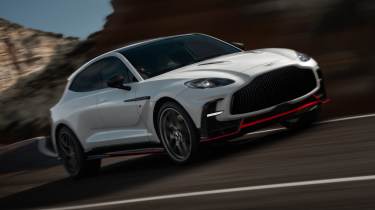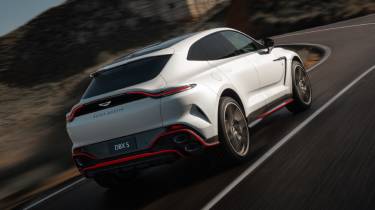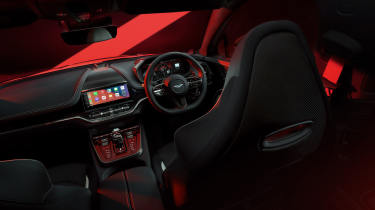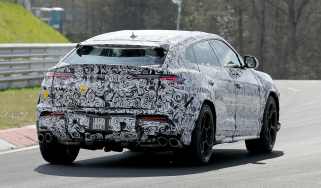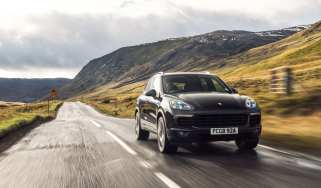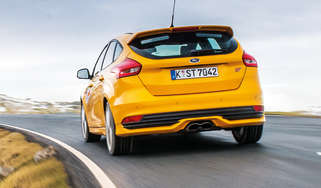The 717bhp Aston Martin DBX S is the start of a new Porsche-fighting era
The beginning of a big derivative push throughout the Aston Martin range, the DBX S adds extra attitude and performance to Aston’s super SUV
In spite of the rocky road the Aston Martin DBX (and the brand as a whole) has traversed, the model has been a success for Aston Martin and with iteration, has gotten better and better over its five years on sale. Now the latest version, the £210k DBX S, is the beginning of a new era for the brand – one that involves diversifying its lineup to head off as many iterations of Porsche and Ferrari alternatives at the pass.
The latest in a long line of Aston Martin ‘S’ derivatives, last used at the end of the VH platform era with the V12 Vantage S and Vanquish S, keeps with tradition by bumping power (717bhp) and losing weight (by 47kg with the right options).
No, the DBX S will not replace the DBX707. Rather, it will join the lineup ahead of it as the flagship of Aston Martin’s super SUV. Flagship status normally means more power and performance, and this is no exception. The DBX S is the most powerful yet and therefore by default, features the most powerful V8 to be fitted to Aston Martin’s mainstream product lineup, the Valhalla hypercar notwithstanding.
With 717bhp, the DBX S enjoys a modest bump of 20bhp over the 707, while the 664lb ft torque figure remains unchanged. The 0-62mph time of 3.3sec and the 193mph top speed are unchanged, though the DBX S is a hair quicker – 0.3sec – to 124mph, taking just 7.2sec to make the sprint.
The 4-litre twin-turbo engine of Mercedes-AMG descent features turbocharger technology ‘transferred directly from the Valhalla hypercar’. The Valhalla got larger compressor wheels, which allow 20 percent more air flow into the engine, so expect those in the DBX S to also be revised for improved flow. This would track Aston Martin’s claims that the engine is headier with more to offer in the higher revs.
Indeed, the 717bhp does come in 250rpm later than in the DBX707, with full power arriving at 6250rpm. The nine-speed wet-clutch transmission is largely unchanged, though the higher rev range means the change-up points have been adjusted. Downshifts are also said to be more aggressive when in Sport or Sport + too. The DBX S remains rear-dominant in terms of its drive bias, with up to 100 per cent of its torque able to be sent rearward and up to 50 per cent able to be sent to the front.
To meet the subtle performance enhancements and tighten the DBX S still more compared to its stablemate and predecessors, there are a few select detail changes under the skin, if not absolute overhauls in engineering. Because let’s face it, an overhaul wasn’t needed. The steering ratio has been quickened mildly, by just 4 per cent, for a nominal improvement in perceived agility. A happy side effect, if not one that’s particularly glamorous, is a decrease in the turning circle of half a metre, making the DBX S the most manoeuvrable yet.
The suspension is unchanged, though it was only just enhanced last year with revised calibrations of both the air springs and the electronic dampers – the latter now Bilstein DTX items first seen on the DB12 and Vantage. Also carried over are the ceramic brake discs, measuring 420mm at the front and 390mm at the rear.
What about this 47kg diet the DBX S is purported to have been on, to take it below the 2200kg mark? Well, there’s now the option of a carbonfibre roof, which results in an 18kg saving – a high-up one too, which does wonders for its centre of gravity. That roof has the strange honour of being the largest single carbon piece ever fitted to an Aston Martin. Another big chunk can be saved by optioning the new magnesium wheels – a first for the segment – which saves a further 19kg, in this case, of unsprung mass.
The next saving comes from the new bumpers, which if specified in carbon represent a saving of 7kg. The looks are a talking point all of their own. If you thought the DBX707 traded a bit too much elegance for extroversion, you might not like the DBX S. This is a more aggressive-looking car, with a jutting sectioned chin spoiler, aggressive air-cleaving skirt, a large diffuser, a big spoiler and optional, a polycarbonate honeycomb mesh grille.
Aston Martin reckons all the fussy details help channel the air around the car but no figures pertaining to drag reduction or downforce increases are given. As before with the DBX707, you can have a contrast livery in Rosso Corsa Red, Trophy Silver or Podium Green.
The thing you’ll notice from the furthest distance, the most distinctive demarcation that this is a DBX S, is the exhaust setup. These stacked pipes are something we’ve seen on a prototype DB12, which we certainly weren’t sure of there. Here, there’s more bulk to the DBX S, so they don’t stand out quite so much. They’re still pretty aggressive, though and there’s no escaping the Ferrari California and Lexus IS F comparisons.
On the inside, the DBX S continues with the overhauled cabin introduced last year, albeit with more of a sporting emphasis in terms of specification. There’s standard Alcantara trim and herringbone stitching throughout, while a nice big ‘S’ embroidered on the seat means you won’t forget it’s the top model. Of course, a trip to Q will yield limitless further possibilities in terms of specification and customisation – and cost.
The DBX S is available to order now with deliveries expected to begin before the end of the year. Prices for the Aston Martin DBX S start from £210,000, minus any of the lightweight options listed above, or indeed any Q customisation. Even with all that, it’ll still look like good value next to the £300k+ Ferrari Purosangue.
